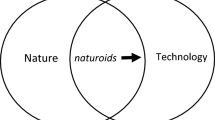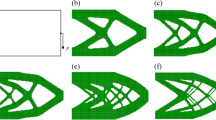Abstract
A constructive-production approach, which is more general than other well-known approaches, is proposed to generate fractals. Possibilities are shown for using a large variability of attributes and initial elements of formation of fractals, as well as combining fractals into multifractals. The possibilities of generating fractals are extended by eliminating the constraints necessary in other approaches. The proposed approach allowed to establish several previously unknown properties of fractional dimension that consist of the possibility of changing it in the process of generation of a fractal and a mismatch of fractional dimensions of the form limit during generation and the limiting fractal. A simple definition of a deterministic geometric fractal is given. This definition takes into account all the properties characterizing such a fractal.
Similar content being viewed by others
References
B. Mandelbrot, The Fractal Geometry of Nature [Russian translation], Institute of Computer Science, Moscow (2002).
R. M. Kronover, Fractals and Chaos in Dynamic Systems [Russian translation], Tekhnosfera, Moscow (2006).
K. Falconer, Fractal Geometry: Mathematical Foundations and Applications, Wiley, Chichester (1999).
S. V. Bozhokin and D. A. Parshin, Fractals and Multifractals [in Russian], Scientific Publishing Centre “Regular and Chaotic Dynamics,” Moscow–Izhevsk (2001).
A. D. Morozov, Introduction to the Theory of Fractals [in Russian], Institute of Computer Science, Moscow–Izhevsk (2002).
I. K. Rystsov, “Affine automata and classical fractals,” Cybernetics and Systems Analysis, Vol. 54, No. 1, 11–20 (2018).
A. Lindenmayer, “Mathematical models for cellular interaction in development,” J. Theoret. Biology, Vol. 18, Iss. 3, 280–315 (1968).
V. I. Shynkarenko and V. M. Ilman, “Constructive-synthesizing structures and their grammatical interpretations. I. Generalized formal constructive-synthesizing structure,” Cybernetics and Systems Analysis, Vol. 50, No. 5, 655–662 (2014).
V. I. Shynkarenko and V. M. Ilman, “Constructive-synthesizing structures and their grammatical interpretations. II. Refining transformations,” Cybernetics and Systems Analysis, Vol. 50, No. 6, 829-841 (2014).
V. I. Shynkarenko, V. M. Ilman, and V. V. Skalozub, “Structural models of algorithms in problems of applied programming. I. Formal algorithmic structures,” Cybernetics and Systems Analysis, Vol. 45, No. 3, 329–339 (2009).
V. A. Erovenko, “Concept of Mandelbrot fractal from the mathematical and philosophical points of view,” Mathematical Structures and Modeling, No. 4 (36), 29–39 (2015).
Author information
Authors and Affiliations
Corresponding author
Additional information
Translated from Kibernetika i Sistemnyi Analiz, No. 2, March–April, 2019, pp. 22–35.
Rights and permissions
About this article
Cite this article
Shynkarenko, V.I. Constructive-Synthesizing Representation of Geometric Fractals. Cybern Syst Anal 55, 186–199 (2019). https://doi.org/10.1007/s10559-019-00123-w
Received:
Published:
Issue Date:
DOI: https://doi.org/10.1007/s10559-019-00123-w




